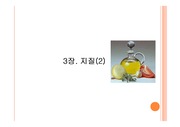

-
미리보기
목차
1. 서론
2. 본론
3. 오메가-3 지방산의 합성경로 및 대사
4. 심혈관에서 오메가-3 지방산의 기능 및 예방효과
5. 결론
6. Discussion
7. Reference
본문내용
서론
우리나라의 주요 사망원인 중에서 각종 악성종양(암) 다음으로 2, 3위를 차지하고 있는 것이 바로 심혈관계 질환(CVD; Cardiovascular Disease)이다.세계보건기구(WHO; World Health Organization)에 따르면, 심혈관계 질환은 세계적으로 사망 원인 중 가장 많은 부분을 차지하고, 년마다 더 많은 사람들이 다른 원인보다 이 질환으로 사망한다고 한다. 또한, 2008년에 17,300,000명이 심혈관계 질환에 의해 사망한 것으로 조사되었는데, 특히 심장병과 뇌졸중으로 사망하는 사람의 수는 2030년까지 23,300,000명으로 증가할 것이라고 예측하였다.
<중 략>
심혈관 질환은 순환기계 질환이다. 심혈관계 질환군을 이루고 있는 고혈압성 질환, 허혈성 심장 질환, 뇌혈관 질환을 의미한다. 혈청 지질, 비만, 고혈압, 당뇨, 스트레스, 운동부족, 흡연 등이 1차적으로 심혈관계 질환에 위험한 요인으로 꼽히고, 2차적으로 위험한 요인으로는 성별과 나이, 유전 등을 볼 수 있다. 우리가 현재 조절할 수 있는 것은 1차적인 요소들인데, 이것을 오메가-3 지방산을 섭취함으로써 조절하여 심혈관계 질환을 예방할 수 있는지 알아보았다.
- 항염증 작용
염증은 심혈관계 질환의 위험인자이다. 오메가-3 지방산은 항염증 작용을 하여 심혈관계 질환을 예방하는 효과를 가진다. EPA에서 형성되는 3-series prostanoid (PGE3, PGI3, TXA3)와 5- series LT(Leukotriene)과 같은 Eicosanoid는 항염증 작용이 있고, 오메가-3 지방산이 간접적으로 COX(cyclooxygenase)-2의 생성을 억제하기도 한다. COX-2는 enzyme으로, 염증 반응과 통증, 열을 발생시키는prostaglandin을 만들어낸다. 곧, Prostaglandin의 형성을 억제하여 염증을 줄어들게 하는 것이다. 그리고 오메가-3지방산의 항염증 작용은 동맥에 단단한 섬유성 막인Plaque가 형성되거나 plaque가 혈관 내벽에서 안정화되는 것을 막아줌으로써 심혈관 질환에 중요한 역할을 한다는 연구 결과가 있다.
참고자료
· 신지예, “국민건강영양조사(2008-2010)를 이용한 성인의 심혈관 질환과 식이패턴, 혈중 중금속 농도, 생선섭취와의 관련성”, 이화여자대학교 대학원 석사논문, 2012
· 박용순, “심혈관계 질환의 위험지표로서 Omega-3 Index에 대한 올바른 이해 및 한국인에의 적용”, 대한비만학회지: 제 19 권 제 1 호 2010, pp. 724~727
· Emken EA, Adlof RO, Gulley RM. “Dietary linoleic acid influences desaturation and acylation of deuterium-labeled linoleic and linolenic acids in young adult males”. Biochim Biophys Acta 1994;1213(3):277-88.
· Burdge GC, Finnegan YE, Minihane AM, Williams CM, Wootton SA. Effect of altered dietary n-3 fatty acid intake upon plasma lipid fatty acid composition,conversion of [13C]alpha-linolenic acid to longer-chain fatty acids and partitioning towards beta-oxidation in older men. Br J Nutr 2003;90(2):311-21.
· 정보영, 오메가-3 지방산의 식품중 분포와 생리학적 기능, 한국작물학회지, 1997
· Burdge G, Alpha-lonolenic acid metabolism in men and women: nutritional and biological inmlications, Curr Opin Clin Nutr Metab Care, 2004
· Mazaffarian DM, Ascherio A, Hu FB, Interplay between different polyunsaturated fatty acids and risk of coronary heart disease in men, Circulation, 2005
· 문태영, 서재수, 송명재, 오메가-3 지방산의 심혈관계 보호기능, 보건과학연구소보, 2008
· Chen I. S., S. Subramaniam. M. Cassidy, A. D. Sheppard and G. V. Vahouny, J. Nutr, 1985
· 이혜란, “중년여성에서 신체활동과 비만의 상호작용이 심혈관 질환 위험에 미치는 영향”,아주대학교,2011
· Trevor A. Mori, “Dietary n-3 PUFA and CVD: a review of the evidence”, Proceedings of the Nutrition Society, Page 1 of 8
· Thies F, Garry JMC, Yaqoob P et al. (2003) Association of n-3 polyunsaturated fatty acids with stability of atherosclerotic plaques: a randomised controlled trial. Lancet 361, 477–485.
· Harris WS (1996) “n-3 Fatty acids and lipoproteins: comparison of results from human and animal studies”. Lipids 31, 243–252.
· Harris WS (1997) “n-3 Fatty acids and serum lipoproteins:human studies”. Am J Clin Nutr 65, Suppl. 5, 1645S–1654S.
· 박용순, “심혈관계 질환의 위험지표로서 Omega-3 Index에 대한 올바른 이해 및 한국인에의 적용”, 대한비만학회지: 제 19 권 제 1 호 2010, pp. 724~727
· Mori TA, Burke V, Puddey IB, Watts GF, O'Neal DN, Best JD, et al. “Purified eicosapentaenoic and docosahexaenoic acids have differential effects on serum lipids and lipoproteins, LDL particle size,glucose, and insulin in mildly hyperlipidemic men”.
· Am J Clin Nutr 2000;71(5):1085-94.
· von Schacky C. “A review of omega-3 ethyl esters for cardiovascular prevention and treatment of increased blood triglyceride levels”. Vasc Health Risk Manag 2006;2(3):251-62.
· 박선혜, 심혈관계 질환에 오메가-3 지방산이 미치는 영향= Effect of n-3 fatty acid on cardiovascular disease, 한양대학교 대학원 석사논문, 2009
· Din JN, Newby DE, Flapan AD. “Omega 3 fatty acids and cardiovascular disease-fishing for a natural treatment”. BMJ 2004;328(7430):30-5.
· Harris WS, Park YS, Isley WL. “Cardiovascular disease and long-chain omega-3 fatty acids”. Curr Opin Lipidol 2003;14(1):9-14.
· Park YS, Harris WS. “EPA, but not DHA, decreases mean platelet volume in normal subjects”. Lipids 2002;37(10):941-6.
· Trevor A. Mori, “Dietary n-3 PUFA and CVD: a review of the evidence”, Proceedings of the Nutrition Society, Page 1 of 8
· Siess, W., P. Roth, B. Scherer, I. Kurzmann, B. Bhlig and P. C. Weber(1980), Lancet. I, 441
· O'Keefe JH Jr, Abuisssa H, Sastre A, Sterinhaus DM,Harris WS. “Effects of omeg-3 fatty acids on resting heart rate, heart rat recovery after exercise, and heart rate variability in men with healed myocardial infarctions and depressed ejection fraction”. Am J Cardiol 2006;97(8):1127-30.
· 정세원, 김지연, 백주은, 김주희, 곽진숙, 권오란, 건강기능식품의 기능성을 중심으로 한 오메가-3 지방산 함유유지의 혈행개선 효과에 대한 체계적 고찰, Journal of Nutrition and Health, 2013;46(3) 226~238
· Ricky Turgeon, Fred janke, Michael R. Kolber, Omega-3 for patients with cardiovascular disease, Can Fam Physician, 2012; 58(11):1225
· 곽상미, 오메가 3 지방산 보충제의 심혈관계 질환 이차발생 예방효과에 관한 메타분석, 충남대학교 대학원 석사논문, 2012
· Atul Singhal, Julie Lanigan, Clare Storry, Sarah Low, Toni Birbara, Alan Lucas and John Deanfield , Docosahexaenoic Acid Supplementation, Vascular Function and Risk Factors for Cardiovascular Disease: A Randomized Controlled Trial in Young Adults, J Am Heart Assoc. 2013; p7태그
-
자료후기
Ai 리뷰이 자료를 통해 새로운 인사이트와 지식을 얻을 수 있었습니다. 내용이 풍성하여 과제 작성에 큰 도움이 되었습니다. 계속해서 좋은 자료를 기대합니다! 감사합니다. -
자주묻는질문의 답변을 확인해 주세요

꼭 알아주세요
-
자료의 정보 및 내용의 진실성에 대하여 해피캠퍼스는 보증하지 않으며, 해당 정보 및 게시물 저작권과 기타 법적 책임은 자료 등록자에게 있습니다.
자료 및 게시물 내용의 불법적 이용, 무단 전재∙배포는 금지되어 있습니다.
저작권침해, 명예훼손 등 분쟁 요소 발견 시 고객센터의 저작권침해 신고센터를 이용해 주시기 바랍니다. -
해피캠퍼스는 구매자와 판매자 모두가 만족하는 서비스가 되도록 노력하고 있으며, 아래의 4가지 자료환불 조건을 꼭 확인해주시기 바랍니다.
파일오류 중복자료 저작권 없음 설명과 실제 내용 불일치 파일의 다운로드가 제대로 되지 않거나 파일형식에 맞는 프로그램으로 정상 작동하지 않는 경우 다른 자료와 70% 이상 내용이 일치하는 경우 (중복임을 확인할 수 있는 근거 필요함) 인터넷의 다른 사이트, 연구기관, 학교, 서적 등의 자료를 도용한 경우 자료의 설명과 실제 자료의 내용이 일치하지 않는 경우
찾으시던 자료가 아닌가요?
지금 보는 자료와 연관되어 있어요!
문서 초안을 생성해주는 EasyAI




